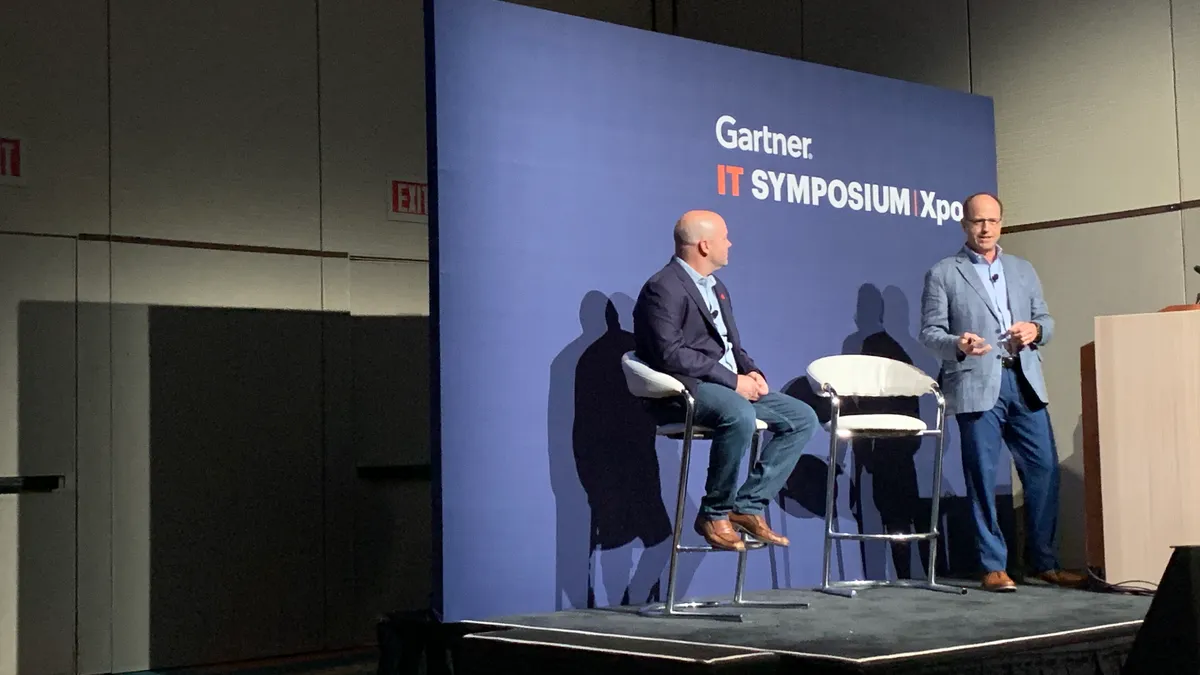ORLANDO, Fla. — Last year ExxonMobil announced plans for "aggressive growth," pushing to double its earnings by 2025 without changing customer pricing.
The ambitious goal forced the oil and gas company to digitally transform, according to Bret McKee, chief technology architect at ExxonMobil, who spoke at the Gartner IT Symposium/Xpo in Orlando, Florida last week.
Over the last 30 years, the company's business model was largely designed around ERP transactions across single lines of business. The 2025 goal forced the ExxonMobil to change how it collects and harnesses data insights. Today the company has mandates around APIs and cloud-ready solutions.
DevOps and agile are playing a vital role in ExxonMobil's digital transformation. Because technology was named a key player for its $31 billion goal, the company had to confront the cultural barriers obstructing digital transformation.
There is at least "some flavor" of DevOps in most organizations, but a lot of modernization focus is on tech rather than the people and processes it impacts, according to Jason Smith, VP of North America Consulting Program at Red Hat, while speaking at the event.
When companies begin their digital transformation efforts, they're likely to start from the bottom up, achieving small wins and scaling along the way. The reality is, technology is the smallest hurdle for modernization. Culture is the largest.
"How we collaborate is as important as we code," said Smith.
Sprinting toward 2025
By establishing a bold business goal, ExxonMobil had to readjust its business model. "Our journey gets sidelined when we start chasing technology first," said McKee. While it's fun to "geek out" on new technologies, it has to deliver value.
While the company is still doing research and development for testing use cases for emerging technologies, like blockchain and quantum computing, ExxonMobil adopted tiered approaches to its digital transformation, including:
-
Sprint 1: virtualization and infrastructure management
-
Sprint 2: enterprise application architecture
-
Sprint 3: automation strategy
-
Sprint 4: standard operating environment design
In Sprint 1, the company had to assess how it would use core Red Hat solutions for an emerging application portfolio. With the ability to run Kubernetes on-premise, the company went with Red Hat's OpenShift for Sprint 2. During Sprint 3, the company redeployed container as a service and rebuilt its end-to-end platform for a fully automated solution.
Sprint 4 was dedicated to building a platform only once but using it for multiple use cases. This is where "the U" or "the couch" comes into play, explained McKee.
"The couch" is a diagram depicting ExxonMobil's industry collaboration. The two ends of "the couch" are management and orchestration by VMware on one side and security and trust on the other side.
The "cushions" on that couch are layered with foundational technologies by Intel, then hardware by vendors including Hewlett Packard Enterprise, Dell and Compulab. The next two layers of cushions include ExxonMobil's operating system, in part, built by Red Hat and its workload virtualization by Docker.
Each use case then sits on "the couch."
Caution ahead
Before sprints were organized and made concise, the company was going through "marathons of activity," usually working beyond the typical 90-day sprints. In development, teams wanted "to go their own ways," but now as agile and DevOps mature, ExxonMobil is collectively prioritizing products, not just projects, said McKee.
Everything has a process for ExxonMobil, but the company is trying to avoid becoming an "operational checklist," said McKee. Historically, the company had a command and control leadership style, and now agile is posing as its "counter culture."
While the company is aware of the long-term investments will mature at a slower rate than technology's advancement, ExxonMobil is "going through a cultural renaissance," said McKee.
In doing so, McKee recognizes that prior to ExxonMobil's changes, collaboration across industry silos might not have happened before. The company was largely operating by "MLP," or "minimum loveable product."
The company is now working on a broader IT and OT design group. "I encourage to keep your head above the digital tide," said McKee. "Enjoy your victories and then quickly begin to climb you next summit."












